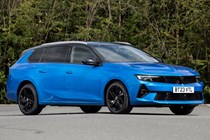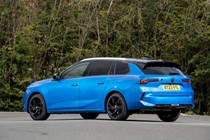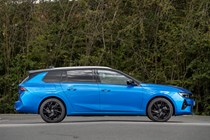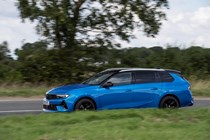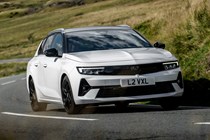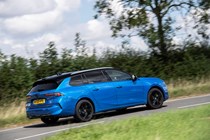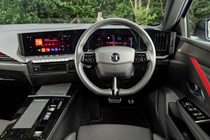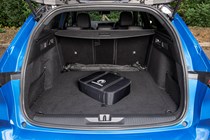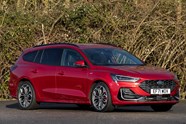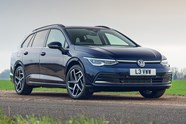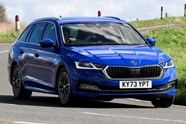
Vauxhall Astra Sports Tourer review
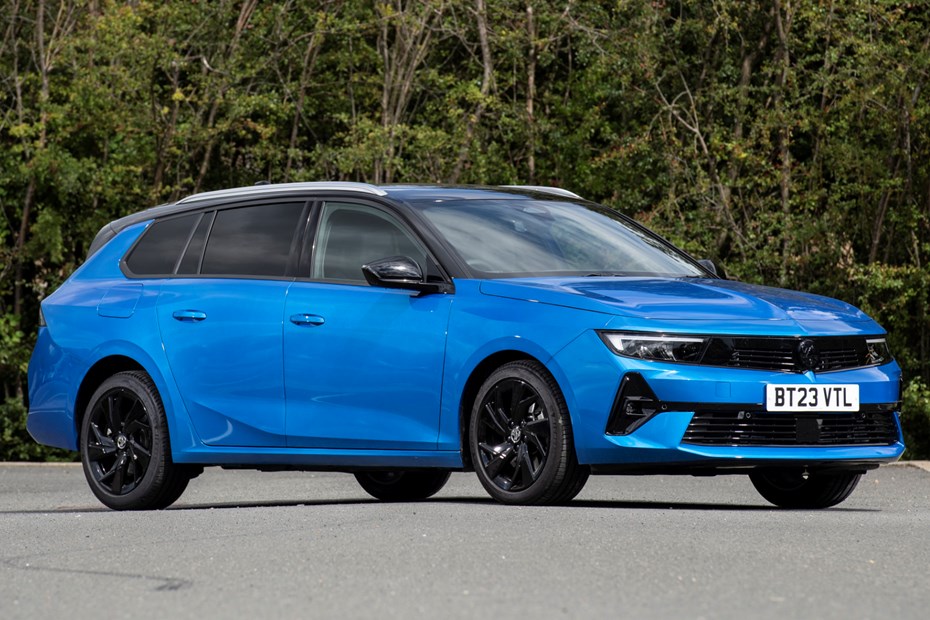
At a glance
| Price new | £28,950 - £44,000 |
|---|---|
| Used prices | £14,763 - £31,130 |
| Road tax cost | £180 - £590 |
| Insurance group | 16 - 31 |
Get an insurance quote with

|
|
| Fuel economy | 44.8 - 64.2 mpg |
| Miles per pound | 6.6 - 8.6 |
| View full specs for a specific version | |
Available fuel types
Petrol
Diesel
Alternative fuel
Pros & cons
- Generous equipment levels
- Sensible yet stylish
- Competitive value
- Smaller boot than rivals
- No high-performance petrol
- No diesel engine at all
Vauxhall Astra Sports Tourer rivals
Overview
At a time when SUVs are fast becoming the norm, are estate cars becoming counterculture chic? The Vauxhall Astra Sports Tourer – despite the name – is an old-school load-lugger vying for an entry in our best estate cars list.
It follows the tried and testing formula of stretching a conventional family hatchback, in this case the rather decent latest-generation Vauxhall Astra hatch. The result is an Astra estate car with a refreshingly up-to-date outline, thanks to Vauxhall’s latest ‘Vizor’ front end. This is blacked out on GS Line models and paired with a contrasting roof colour for a sportier look, adding a little substance to the otherwise nonsensical Sports Tourer name.
Engine choice in the UK is limited to conventional petrol and plug-in hybrid options. You can’t buy a Astra estate diesel here. However, an Astra Sports Tourer Electric model with – you guessed it – 100% electric power will join the range at the start of 2024.
Mechanically, this Vauxhall estate closely related to the Citroen C5 X, Peugeot 308 SW and DS 4, so you’ve got quite a choice of styles to choose from if any of the engines mentioned here are appealing. Estate versions of the Ford Focus, SEAT Leon, Skoda Octavia and Volkswagen Golf are also key alternatives to the Astra Sports Tourer that deserve consideration for your shopping list.
What’s it like inside?
The days of drab Vauxhall interiors seem to be disappearing into the distance. Up front it’s virtually identical to the hatchback with the same twin 10.0-inch screens for the infotainment system and instruments. it has a generally pared-back feel with fewer buttons than before, punctuated by slashes of bright red.
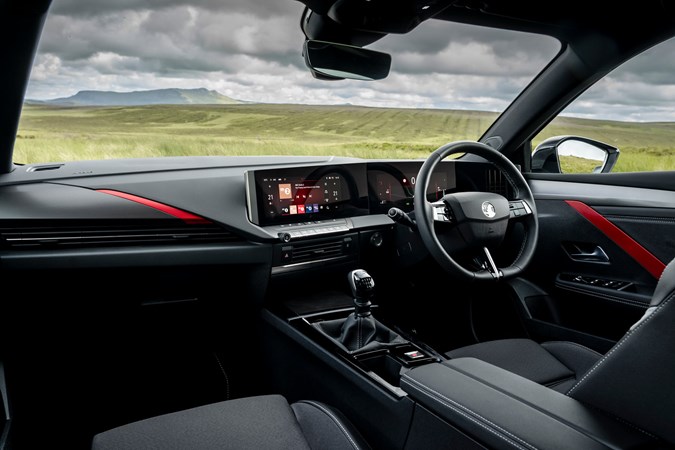
Thankfully Vauxhall hasn’t gone as touch-control crazy as Volkswagen, as even though the button-count has shrunk you can still physically adjust things when it comes to commanding vital components such as the heating and ventilation.
At the business end there’s 597 litres of luggage space with the rear seats upright and 1,634 litres folded, a task that’s helped-along via a helpful flap in the boot. These figures drop to 516 litres and 1,553 litres in the PHEV (plug-in hybrid electric vehicle) variants, but you can store the charging cable under the floor.
The practicality of the conventional petrol versions is further enhanced by the optional Intelli-Space moveable boot floor. This can be adjusted to high and low positions and tilted at up to 45-degrees to separate loads. It’s even possible to get at the first aid and tyre repair kits without having to empty the entire boot. Handy.
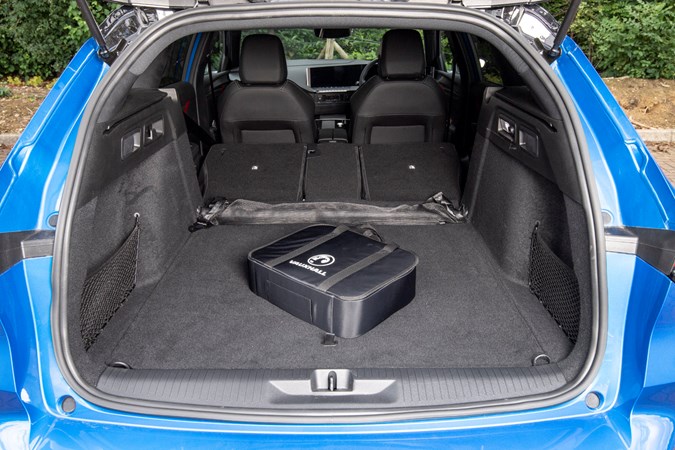
However, those looking for outright capacity might be slightly disappointed. Although the boot is still larger than in premium alternatives such as the Audi A4 Avant, BMW 3 Series Touring and Mercedes C-Class Estate (all of which are technically from a class in size above the humble Astra), it can’t match most direct rivals. That includes the 308 SW and VW Golf Estate. The Skoda Octavia Estate knocks them all for six.
In better news, the penalty you pay for going PHEV isn’t as greater loss of boot space as it is in some competitors (including the BMW 330e Touring), which could make the Astra estate a tempting choice for company car drivers.
Sadly for Vauxhall, we have also found the equivalent Golf, Leon, Focus and Octavia to be better for rear passenger seat space. The Astra’s headroom is fine, but tall adults in the back will find their knees closer to the front seats than you might expect. All of the extra space made possibly by the longer body has gone into increasing the Vauxhall’s boot space.
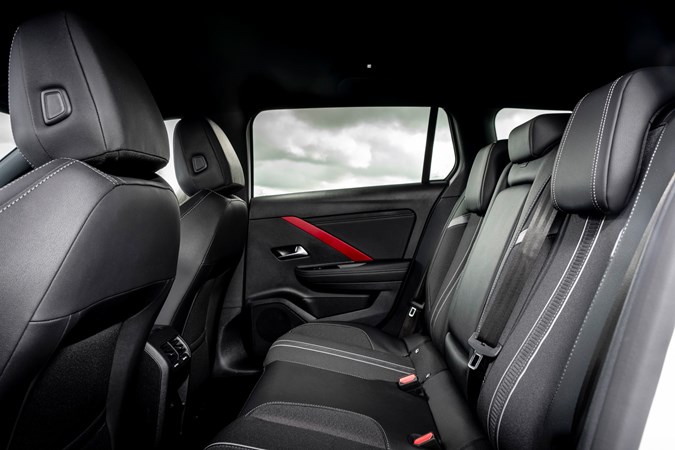
For further information on front space, quality and the infotainment have a look at our Vauxhall Astra hatchback review.
Comfort
As with the Astra hatchback, the Sports Tourer benefits from seats certified by a German campaign for healthier backs. This translates into very comfortable and adjustable front seats – you can change the seat base angle, lumbar support and thigh support.
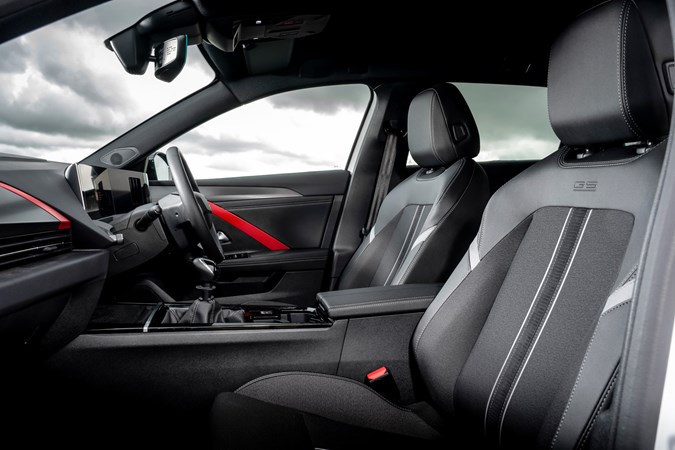
Road and wind noise is well contained, even with that massive boot, and very few vibrations are thrown up through the seat or steering wheel.
Safety
All Astras get automatic emergency braking (AEB), lane keep assist, eight airbags, Isofix mounts on the outer rear seats and a driver drowsiness alert. Upgrade to GS Line and the AEB works at higher speeds plus there’s traffic sign recognition and adaptive cruise control.
Despite this, the Astra didn’t quite get the full five stars from Euro NCAP, managing only four. This is a respectable score but plenty of other cars in this price bracket manage to go one better.
Engines
The Astra Sports Tourer shares its engines with the hatchback model, which means there’s a pair of three-cylinder petrols and two plug-in hybrids up for grabs.
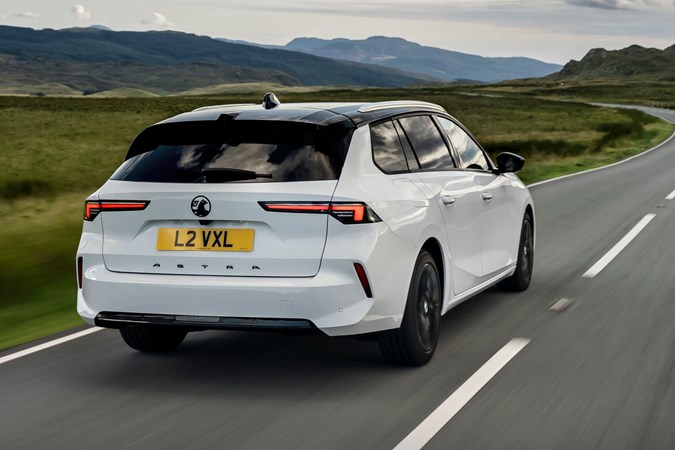
The petrol engines come with 110 and 130hp respectively and a six-speed manual gearbox. The regular plug-in hybrid is powered by a 1.6-litre four-cylinder petrol engine, a 12.4kWh battery pack and an electric motor. Overall power output is 180hp and the battery range is officially 37 miles. It comes with an eight-speed automatic gearbox and emissions low enough for it to qualify for the 8% BIK tax bracket.
There’s a plug-in hybrid GSE model too, which we’re yet to test. It’s essentially the same as the regular PHEV but with 225hp, different suspension setup and a lower ride height.
What’s it like to drive?
The Astra Sports Tourer feels firmer than the equivalent Octavia and 308 giving greater body control and less float over undulating country roads. The downside is that it picks up on surface imperfections more, especially at town speeds. You’ll notice this particularly if you opt for the larger 18-inch wheels; stick with 17-inch rims if comfort is more of a priority to you.
There’s plenty of grip in the bends, and a reassuringly predictable outcome if you push too hard, so it’s unlikely the Astra estate is going to unexpectedly chuck you off the road. The steering is well-weighted and precise, making it easy to place, while body lean isn’t too bothersome.
While it doesn’t feel as keen to corner as a Focus or Leon, there is still some satisfaction to be had from the driving experience here. PHEV models do feels less agile than the ordinary petrols, however, due their increased weight the distribution of it.
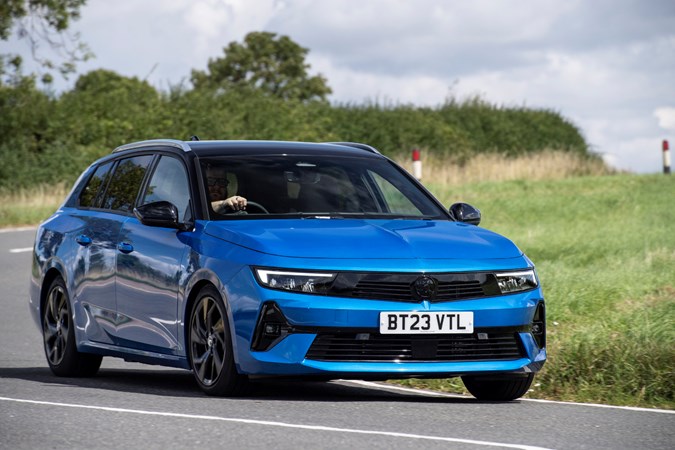
As for the engines, the 130hp petrol is sufficient to deal with a couple of people aboard, although those that regularly carry heavy loads may wish for a bit more poke. The Golf and Leon are available with anything from 150hp to more than 300hp, suiting those who want to tow or just go quickly.
Performance is punchier in the plug-in hybrid thanks largely to the presence of the torque-boosting electric motor. It’s pokey enough in electric mode to deal with typical urban traffic – where you’re most likely to make use of the zero emissions capability – and pretty brisk when the engine joins the party.
This isn’t always as instant a transition as we’d like though, as there’s often a significant hesitation before the combustion process kicks in.
What models and trims are available?
The petrol models available (in price order) are: Design, GS and Ultimate spec. Even the entry-level Design comes with LED headlights, front and rear parking sensors and keyless entry and starting.
GS gains larger 17-inch alloy wheels (as opposed to 16s on the Design trim), a contrasting black roof, rear privacy glass and a rear parking camera. Top spec Ultimate adds wireless phone charging, head-up display and heated front seats.
Plug-in models get rid of Design and add a range-topping GSE model. This ups power to 225hp and adds 18-inch wheels and Alcantara seats.
To find out our overall rating, click below for to the Vauxhall Astra Sports Tourer verdict page.



